There are many ways to propagate a succulent plant, which is no doubt while there plants are so popular all around the world. Let me who you four main ways of succulent reproduction. While you can use all the methods with almost every succulent, certain method works better with certain type of succulents, and that’s exactly what I will try to explain on the following lines :).
Propagating succulents using cuttings
One of the most common propagation processes is with the use of cuttings. The cutting method works best with tall succulents that have well-developed stems. You’ll need a well-sharpened blade since a clean-cut will increase the chance of your succulent’s survival rate.
Aside from using a sharp blade, cutting succulents also requires looking for stems that are actively growing with roots popping outside. Cut the young and “rooty” stems, since these are exactly the stems that will bring you the success you are hoping for.
After cutting, just allow the stem to develop some callus before planting it. This process usually takes 3-5 days, and the step is critical to prevent baby plants from acquiring fungal infections. Once the stem is callused, you can safely place your cuttings in a shallow pot. Bury just the callused half of your cuttings and put it in a place with a little amount of sunlight. Then you can water it regularly (but softly!) spraying especially the areas with new roots. It is very important to note that an excessive amount of water will harm your baby succulents, so avoid watering it excessively. Less is more in this case.
Leafing as a 2nd way of succulent reproduction
A second popular method is called Leafing. Gardeners with plump and pulpy succulents love this method. Just as the name suggests, you remove some leaves and plant them anew.
Similar to the previous method, leafing also requires careful cutting techniques. In using leaves for propagating your plants, make sure to make the cut where the leaves and the stem meet, using a clean and sharpened blade. After cutting, place it in a shallow and soiled container and expose it to a minimum amount of sunlight while spraying it regularly with water to keep it moist, but not wet!
A callus will surely develop and in a matter of 3-8 weeks (much longer than it takes with the cuttings propagation method), and the core of the “mother leaf” will fall and wilt. The buddings will then be visible, and it the signal the plant is ready to be transferred to its permanent planter.
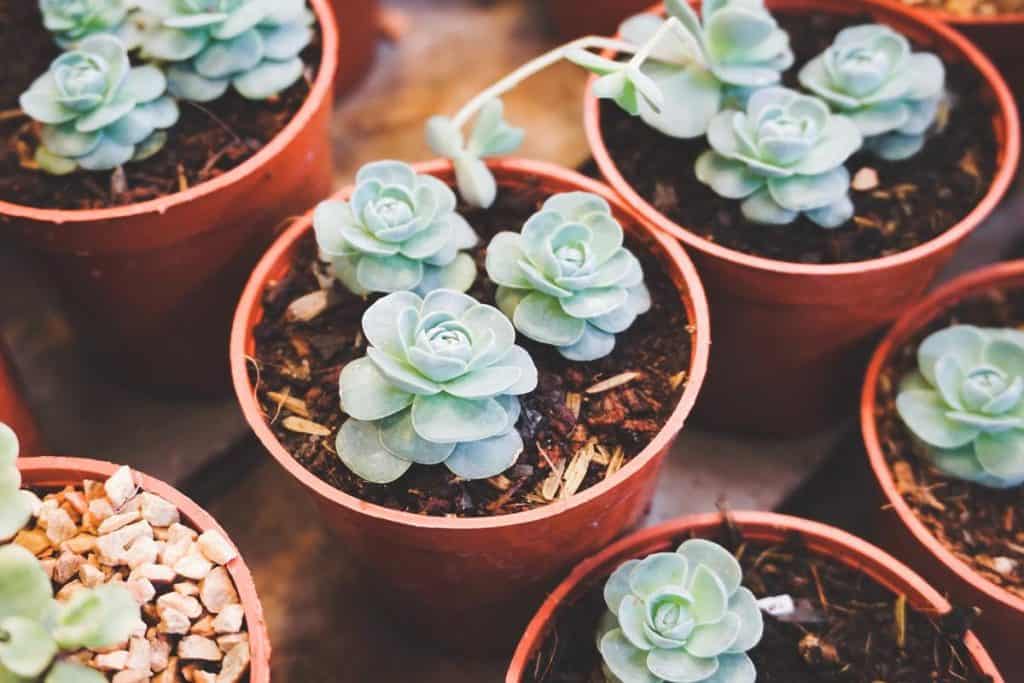
Stem cutting is the next way of propagating succulent plants
The third method is called stem cutting. This method works best in rosette-shape plants and in branched plants, or basically in any plants that have long stems. When finding the proper stems to cut, it is better to choose the shorter ones, because they are still actively growing. In this case, your new plant will have a higher chance of surviving.
Of course, after cutting, callusing will take up to 4 days with this method, and then you can just follow the steps from method no. 2 I just described a minute ago.
Propagating succulents using seeds
Since most succulents do flower, they produce seeds. You can typically find the seeds at the flower’s base, and they usually have an orange color. Once you collect them, make sure to rinse them with warm water to get rid of the coating. Then you can plant the seeds on the pot with the soil just partly covering the seeds. Just like you’d do with many other plants.
You can water your seeds from time to time with a spray bottle cautiously, as young succulents require careful treatment. and then just wait for the miracle of nature!
Hens and chicks are easier to propagate in water
Although the methods may seem easy to you, they may not be applicable to all kinds of succulents. For example hens and chicks. Direct cutting and leafing are not applicable to offsets as these types of succulents have their leaves and stem strongly connected to one another. The common way of propagating offsets is through the water.
Just like any other propagating method, it will start from performing a clean cut of your succulents followed by letting it produce callus. Then, instead of placing it on soil, place it in water in a glass or a jar. Remember, cuttings from your offsets should not be fully soaked in water. Instead, dip only the part where the cutting took place. Sprouting of roots will typically happen overnight, but wait until the roots develop somehow before planting the new succulent in a pot.
How to breed succulents?
Succulents are part of a flora or plant kingdom which reproduces asexually. Asexual reproduction is not about the combination of gametes but rather about inheriting the genes of the parent plant.
Unlike the propagation process which only needs a single succulent, in cross-breeding, you’ll need two different kinds of succulents. Breeding is only possible through cross-pollination. Here are the steps you need to take to achieve success in cross-breeding of your plants.
- Step1: Pulling off a flower from the main plant.
- Step2: Get rid of the flower petals leaving the anther which is filled with pollen then pull the anther’s stamen.
- Step3: Rub the freshly removed pollen onto the flower of the plant you want to cross-pollinate with.
- Step4: Once the pollen is combined, secure it with a tape. This is very important especially if you want to place it outside to prevent the insects from intervening in the cross-pollination process.
- Step5: Lastly, once the cross-pollination is done, you can now collect the seeds and go forward with the planting process.
Problems you can face while breeding or propagating succulents
- Hybridization happens when other strains or species of plants mixed together to create a hybrid variety. However, during a cross-pollination process, it is possible that your newly produced succulents are weaker than the original variety, and won’t survive.
- Succulents that are sterile are not capable of cross-breeding. The only way to breed and propagate them is through the stem and leaves cutting.
- It is also going to be a big challenge if the pollen of the two plants does not bloom at the same time. In this case, the pollination process will be even more challenging. The only way to do it is to control the environment, simulating certain conditions so one of the plants starts blooming in a period of a year that isn’t normally typical for it.
Hybrid succulents require an extra care, and you need to keep them away from insects or other animals that could possibly harm them or intervene in the breeding process. What’s more, not all succulents are good match for one another, and you should study the topic before starting with your experiments…
Final thoughts
There are many ways as far as growing succulents go. But reproducing succulents is another story. The process can be hugely challenging and sometimes intimidating for a newbie. The key is to have courage and determination. In my case, courage and determination really helped me discover the best ways of caring for my succulents, and eventually propagating them with success.
You just need to be willing to explore and do some experiments for your plants. Don’t be afraid to fail, because failure is always part of this process. I have lost many of my plants before due to failure. But it did not hold me back from continually experimenting, until I found what works for my succulents and what does not. And now I share it with you on this blog :).
How deep do succulents need to be planted to thrive?
Growing succulents indoors or outdoors, simply close to your home, allows you to feel the desert ambiance regardless of whether you live in the tropes, moderate climate, or even somewhere close to Arctic region. However, although succulents are tolerant to their environmental conditions, and can survive almost everywhere, they have certain needs and you have to give them these needs to make sure they will thrive, and not merely survive.
One of their needs is the right amount of soil, the right depth of their planting. So, how deep should you plant them? Succulents thrive well in at least 4 inches deep soil. They also need a container with drainage hole(s), to avoid over-watering issues–the most common problem of the plants.
In fact, succulents can thrive well in a shallow and wide container. As long as the container has a drainage hole, and you choose a great fast-draining soil (check my recommended soil for succulents on Amazon), they will do extremely well in s shallow pot, planted just few inches deep.
Related Article: Do Succulents Need Special Soil?
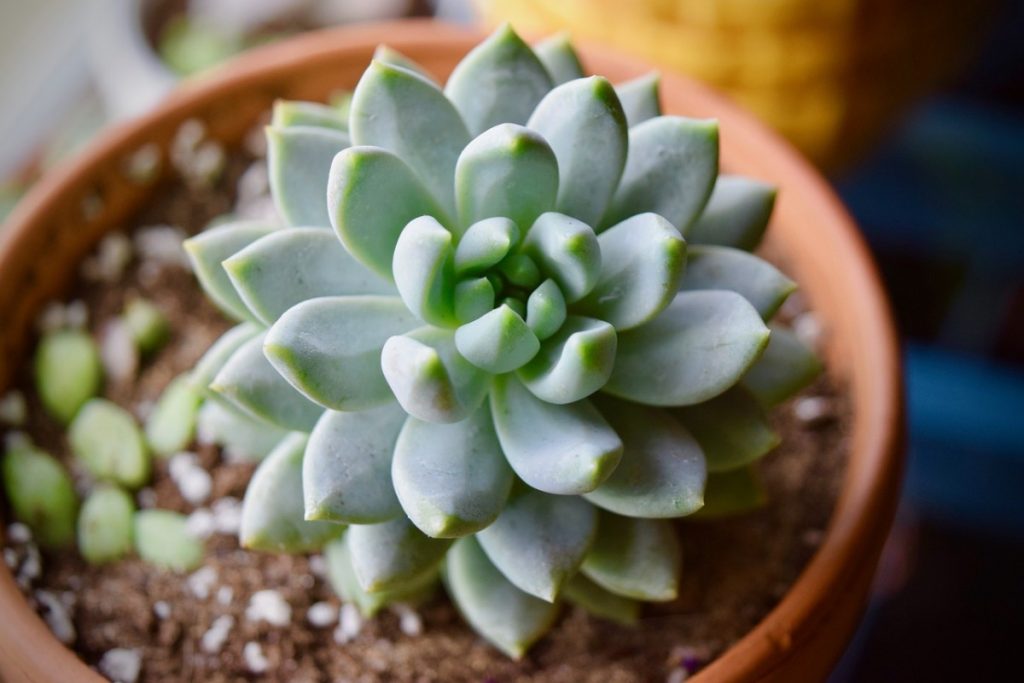
Choosing the right container and soil for your succulents
Choose a loose soil that does not hold too much moisture inside. Remember that succulent plants are accustomed to the soil in semi-desert areas, and you won’t find compact soil in the desert :). Regardless of how deep you plant them, the key is to plant them in a proper soil.
Succulent roots need soil that allows them to breathe. This is also the reason why garden soil is not good for them, since it lacks proper aeration. What I try to point out here is that sometimes asking the right questions is more important than getting some answers. Sure, it matters how deep you plant your succulent. But unless you have a good soil and pot with a drainage hole, you may experience issues regardless of how deep you plant it…
Does the placement affect the optimal depth for planting succulents?
As with everything else in life, individual approach is the key. I mean, every succulent variety is specific, and so is every plant (and every human being, every second we live, every ran drop, etc)…. Planting your succulents indoors, which isn’t natural for them, since plants are accustomed to live outside, it is more important that you pick the right soil, plant it in proper depth, etc.
On the contrary, if you have a nice succulent garden outside, with many thriving plants and optimal conditions, such as soil similar to that in semi-desert areas and access to 4-6 hours of daily sunlight, details like how deep you plant the succulents do not play such a major role. In optimal conditions plants will find their way, and succulents are pretty resilient. In such conditions, even when you place them just on the top of the soil, they will simply do their thing, grow their rooting system as they need, and thrive…
Do succulents like to be crowded?
Although succulents can survive in a crowded setup, I don’t recommend crowding them. This is because crowded succulents will attract insects and mold. It is better if you give them enough space to breathe and grow freely, and this is something to keep on your mind when deciding how deep, and how wide you want to plant them.
Generally, you can plant succulents ½ to 1 inch apart. This is the best distance either in a pot or with other succulent plants. Also, save an inch or at least half of it between the edge of the pot and the base of the plants. Give your plants enough space, and they will thank you with their vibrant colors and inner peace…
Final thoughts
Succulents do not need deep soil. A 4-inch deep is enough for succulents to grow and thrive healthily. It is very important to remember that succulent plants also need appropriate soil and pot–which is actually even more important than the depth of planting.
Bear in mind that compact soil is not good for succulents. It holds too much water and moisture which will in turn cause root rot. And in this case you cannot save the plants with shallow planting, for example. At the end of the day, each situation is unique, and each plant has its own life. Consider the planting conditions, the environment, as well as what you try to achieve with your garden. The most important thing is to observe the plants and experiment. Eventually you will find what works the best…
How to grow succulents without roots – Simple guide for beginners
One of the things that I really love about succulents (I bet you too) is their ability to grow from leaves and stems. They can easily thrive with almost no effort on your part, which is hard to believe especially when we consider how beautiful these plants are.
Back in the day when I was just starting my career of a succulent grower, I had only a few varieties of these plants, often just one piece of each. From there on, however, I was able to generate more and more plants, by simple propagation techniques. The reason is that succulents are easy to propagate, and you can grow them without roots. In this post I will show you how.
Growing succulents from leaver or stems
My favorite way of succulent propagation is growing them from either leaves or stems, since roots can grow easily on these parts of your plants. You can simply stimulate the leaves and cuttings to grow roots. But how can you do that?
Well, the basic and easy technique is to lay the cuttings or leaves on the soil and let them stay there for a week or more. Roots take time to grow so you need to be patient. During this stage, I don’t recommend watering the cuttings, at least until you see the growing tinny plants and roots. That is the sign that the new plant is gaining growth momentum, and a perfect time to give it its first drops of water.
Keep on your mind though that baby plants are vulnerable to over-watering. In most cases, watering them once a week, with a small quantity of water, will work as a good schedule. Having said that, an optimal watering frequency may vary, depending on the climate you are living in. During rainy and winter seasons watering should be less frequent. Other thing you should remember is that as the baby plants grow bigger and the original rosette eventually dies, you should remove the original rosette. This is because it could harm the baby plants. In addition, you should keep the baby plants away from direct sunlight.
* May also interest you:How to Grow Succulents from Cuttings?
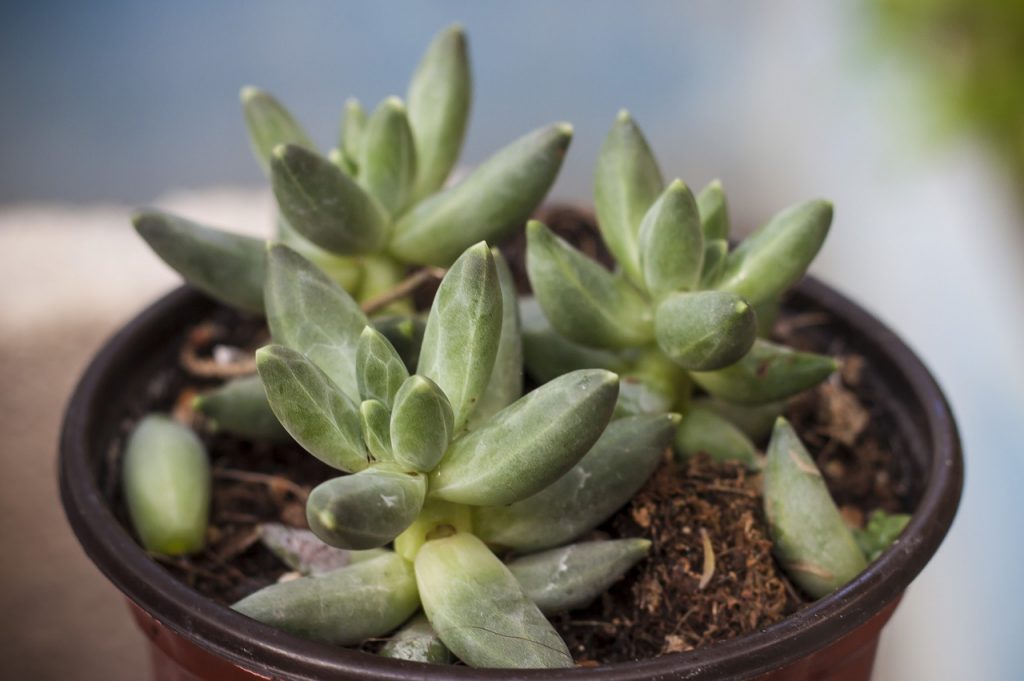
Is it important to stimulate root growth in succulents?
Like other plants, succulents rely on their roots to extract nutrients from the soil. Succulents with poor root systems are not healthy and may die soon. They will also find it hard to tolerate any major changes in their environment.
Succulents normally have shallow roots. Don’t force them to root in the deep pot because it will only hinder their growth. Despite the face that succulents can survive with deep rooting system, such succulents are susceptible to rotting. As you water the pot, the excess water tends to stay in the bottom creating too much moisture at the bottom of the pot which will in turn cause root rot.
If you want to prevent this, you should simply use a shallow pot instead of the deep one. Shallow pots could only accommodate a small amount of water, and the roots won’t rot in such. In my opinion, choosing the right pot for succulents can be tremendously helpful for the plants in a long run. I suggest that you use the succulent pots with drainage holes (check these pots on Amazon, not only they meet my criteria, they are beautiful too :)).
Why roots grow into the air, and it is a problem?
If you have been growing succulents for a while now, you have probably noticed that some of the plants have aerial roots. Let me explain you what it means, and whether you should take any action. First and foremost, aerial roots are signs of healthy growth for the plants. You shouldn’t worry too much when you see them.
Secondly, the common reason for aerial roots growth is poor light source and high humidity. If succulents remain in such an environment, they will eventually become leggy. This is because they try to find sunlight. If you notice it with your plants, the remedy becomes obvious. Give your succulents what they need. Expose them to sunlight in the right duration, for example for a couple of hours a day, preferably of morning sun.
Although succulents are versatile and accustomed to semi-desert areas, they cannot stay under the scorching sun all day long. They would get burned. So what I normally do with my succulents is giving them 4-6 hours of sunlight exposure every morning and then I secure them under the shade. This sounds arduous. And believe me, it is :). But if you really want to keep your succulents healthy, you need to do some work. To make things more bearable, I recommend you to use lighter but durable pots. This will allow you to move the plants from one point to another without exerting so much effort.
Will succulents root in water?
To start with this may sound as an inappropriate question. Succulents don’t like too much water after all, and over-watering causes rotting in these plants. Oddly enough, in some instances, succulents survive in extreme conditions, such as when they are completely soaked in water.
So will they root in water? The quick answer is yes, but not all varieties. To succulents that can survive rooting in water belong the Sempervivum or Echerveria. Other varieties may not survive in such an environment. Let’s dive a bit deeper into the topic, explaining how succulents root in water and what you need to know.
Offshoots are your best bet for water propagation
The successful process of propagation starts with choosing the right part of the succulent to propagate. Cuttings, at least in this case, are harder to propagate in water. I recommend you to use an offshoot. The success rate is much better in this case.
Although I used cuttings in my previous water propagation experiments, I don’t recommend it for beginners. I am not saying that propagation with cuttings cannot work. It does work when handled correctly. But if you are a starter, it is safer to use offshoots. Now let me tell you how to do it all.
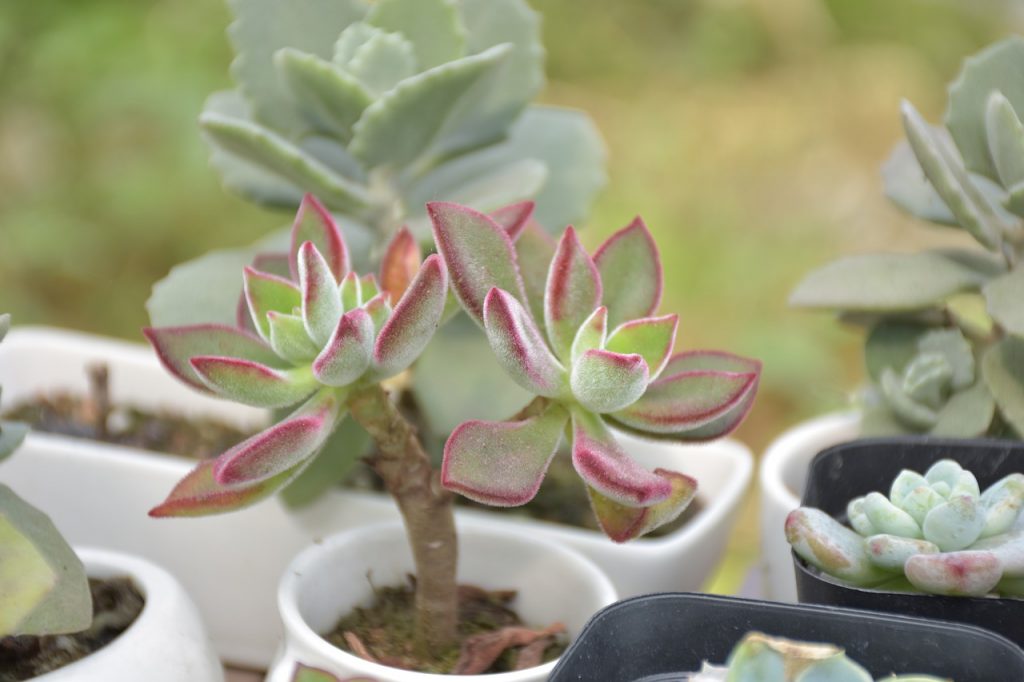
Guide on succulent water propagation
Let me clarify a few things first. Water propagation, as you likely guess, is the process of propagating succulents in water. This process is a little surprising to most succulent lovers. For long, most of us believed that succulents would die when left in water. Believe it or not though, water propagation can be as effective as the traditional technique.
In fact, more and more people are using this technique to propagate succulents. But if you are a complete beginner, count with some trial and error experiments before achieving real success. For disclaimer, if the process is not carried out properly, succulents may drown in the water.
It is important to remember that succulents do have plenty of water in their stems and leaves. So if you soak them in water, there is a very high chance that they start to rot. Keep it on your mind when proceeding further.
What makes succulents survive in water?
The belief that water causes rotting in succulent stems from the idea that succulents planted in wet soil would rot. But the reality is that water alone does not cause rotting. What causes root rotting are the pathogens that live in wet soil.
If soaked in water, succulents do not necessarily rot or die as long they are not exposed to elements that cause rotting.
Traditional propagation vs water propagation
One of the things that bothered me before was the thought that roots developed using water propagation were not the roots that the plants needed when we plant it to the soil later on. But a new bout of curiosity sprouted when I heard that some succulent growers have achieved some success using the water propagation method.
As a result, I was so eager to start an experiment clarifying whether or not what they said was true. So the experiment commenced. I tried three cuttings which I soaked in water. The cuttings were from the Sempervivum. Luckily, I later found out that I have chosen the right variety of succulents. As mentioned earlier, Sempervivum survives in water.
Jar with clean water and a bit of plastic is all you need
After preparing the cuttings, I let them dry. It took several days for the cuttings to dry. I used clean jars for the whole process. The jars contained just enough water for the cuttings to soak in. Then I covered each jar with clean transparent plastic with a little hole in the middle where the cutting was inserted through.
I used plain tap water. Some growers suggest the use of distilled or purified water. I just used pure water. No fertilizer or whatsoever nutrient source included. I let the tip of the cuttings reach the water a little bit. Some growers recommend trying the water propagation without having the cuttings soak in water. Instead, the cuttings are sitting just above the water. The moist from the water triggers the growth of the roots.
Back to my experiment though. I places the cuttings to the area with indirect sunlight and monitored them on a daily basis. What I learned was that the roots took some weeks to grow. In fact, the roots started to grow after 5 weeks. I expected it to take much shorter but here we are. In the entire process, I was suspecting that the cuttings would just rot because of the time they sat in the water. I even thought I did it wrong. Thankfully, after several weeks of waiting, the roots were finally grown.
Planting into the soil–the big day
Then I took the cuttings from the jars and let them dry for a day. Although the roots were fully grown, I wasn’t quite sure whether the cuttings would survive in the soil. This is because they came from water only. I already had prepared the succulent soil mix in the pot where the cuttings would be planted.
Then, finally, I planted the cuttings. Planting the cuttings propagated in the water was just like planting the regular cutting traditionally propagated. The newly planted cuttings were placed in the area with sunlight again. I kept monitoring them though, avoiding strong sunlight in the afternoons.
The full-grown succulents can survive 4-6 hours under direct sun. But of course, the baby succulents will not survive in such conditions. I increased the exposure to sun as the cuttings grew bigger. At this point, the plants need care and attention. They are not hardy enough to stand against extreme environmental conditions. As the cuttings grow stronger roots, they become more versatile. One way to check this is to simply check the roots. You can do it by partially pulling the cutting from the soil. Cuttings that don’t let go of the soil indicate that their roots are established and you do not need to worry much anymore…
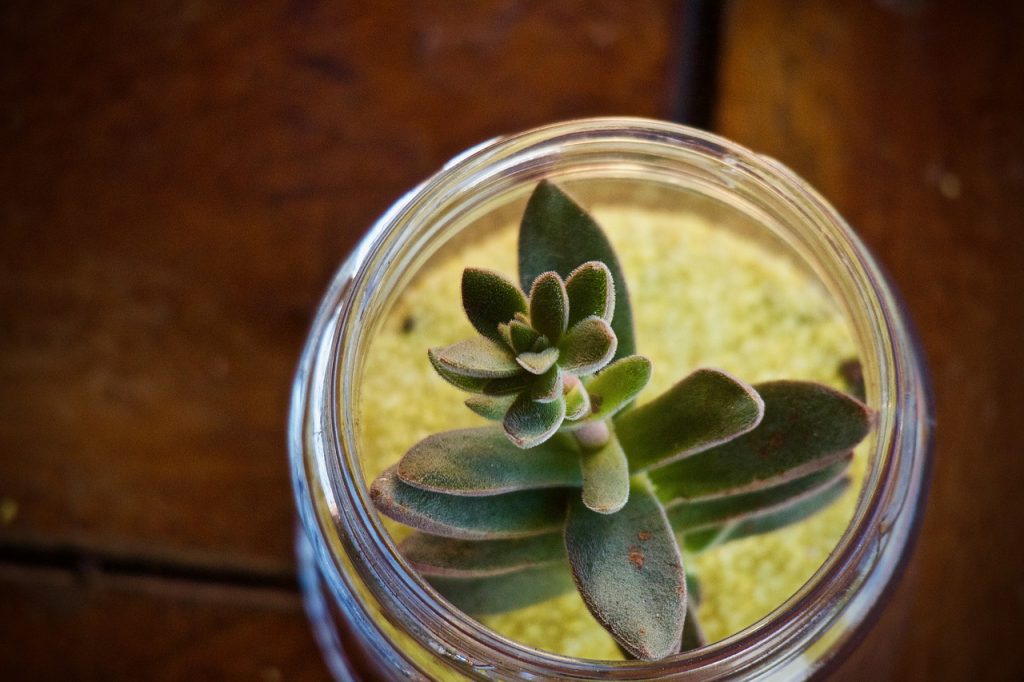
Is water propagation better than traditional methods?
Although water propagation is indeed a legit way to propagate succulents, I don’t see it as better than the traditional and vice versa. It is just a matter of personal preference. As a succulent grower, it is up to you what route you would like to take.
The drawback of water propagation is that it takes much longer for the plants to propagate. On the flip side, it is in a way easier when it comes to materials you need–since you really need just a jar and a clean tap water… Remember though that water propagation won’t work with all succulent varieties. Some plants just won’t survive in water…
How to grow succulents from cuttings
Although succulents are easy to propagate (at least when compared to most other plants), the process can turn into a disaster once you do it wrong. Throughout the years of growing succulents, I made many mistakes, and learned from all of them. Hopefully now I can finally do it right and you can learn from me.
You can start the succulent propagation with seeds, leaves, stems, and cuttings. However, each of these methods has some specifications you should know in order to improve your chances of succeeding. In this post I will focus on propagation from cuttings. Here are the basic steps (we will elaborate on them soon):
- Picking the right cuttings
- Letting the cuttings callus
- Growing roots
- Planting
- Watering and fertilizing
Dividing of plants is where it all starts
Remove the offsets from the main plant. The offsets are capable of surviving on their own after separation from their mother plant. These mini plants have grown roots that signal that they are capable of surviving without their mother plant.
The next step is separating the root. You can divide roots into several clumps that you can later plant individually. You can plant the clumps directly in the succulent soil mix. Unlike the propagated succulents, succulents’ separated roots are capable of surviving on their own in a soil.
Using the right kind of soil is critical at this point. In my case, I use the Hoffman Organic Succulent Soil Mix (click here to check this soil on Amazon). I use this mix for years now, and so far I did not encounter any problems. During this process it is important to provide the plants with shade. I usually place the plants indoors until they become ready for exposure in the direct sunlight.
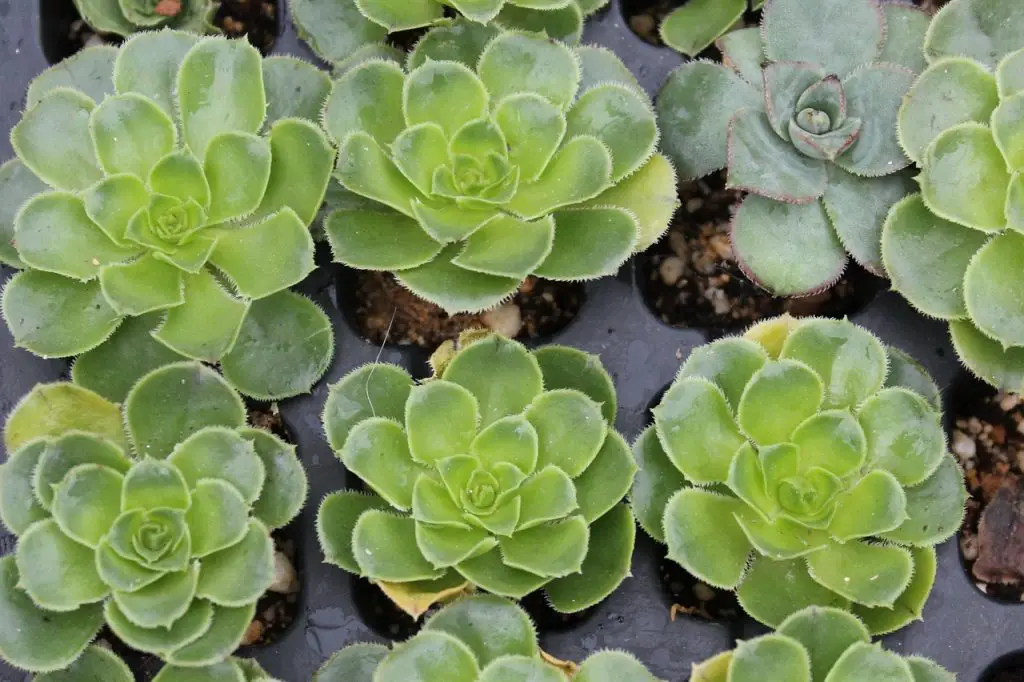
Starting from the cuttings–the core of the method
The first step is to cut off a leaf or stem. Then let the cutting dry for a while. You’ll notice roots and shoots starting to grow shortly after you did this. If not, you can always apply a rooting hormone to speed up the process, and improve your chances of succeeding. This whole process is successful and quick if you keep your cuttings dry. We know two main methods when it comes to planting succulents using the cuttings:
- Using the leaf. To start with this process, you just need to remove some leaves from the established plants. Keep them dry. Once the roots grow, the leaves can be planted into respective pots.
- Using the stem. Aside from the leaves, you can also use the stems. You start by “beheading” the overgrown succulents. Cut the long stem and then dry it until the roots start to grow. This process will not only help you multiply your succulents but also help your plants too. The beheaded plants will grow new sets of stems and leaves that are more beautiful than the old ones.
By now you might already notice that growing succulents from cuttings is not that hard. The common theme is that cuttings (leaves and stems) need to dry out before you plant them. As soon as the roots develop, the cuttings are ready to be planted into the soil. The whole process is easy. Below are the basic steps in propagating succulents.
Related: How to Propagate Succulents with Honey?

Growing succulents from cuttings – a simple guide
Growing succulents from cuttings may require some materials. This may include the following:
- Pruning shears (make sure it is sharp)
- Gloves for gardening
- A handy trowel
- Potting soil and medium for succulents
- Pots or containers with drainage holes
Of course you do not have to spend a hundred dollars to start. You can also improvise and use other household tools…. Anyway, once you have the proper tools ready,you can start the process. Let’s see the basic steps you need to follow to succeed in your propagation:
1. Secure the desired succulent cuttings
In this process, you can use either the leaves or the stems of the succulents. You can start by pruning the stem or gently removing the leaves that you want to grow. Just be careful not to tear the leaves.
Using the sharp pruning shears (check these pruning shears on Amazon), cut your desired stem to propagate. Provide an inch space from the cut and the lower leaves.
2. Let the cutting callus
After having cuttings, lay them down on the flattened succulent soil mix. This is best done with fast-draining soil (click here to check a great soil mix for succulents on Amazon). Avoid inserting the stem directly in the soil because this will kill the stem.
The part of the stem where the cut was made should be pointed downward. It is in this section that the roots will come out.
3. Grow roots and plant
Let the cuttings set for a couple of days until the roots grow. If you have problems with this step, you can always apply my recommended rooting hormone for succulents on the cuttings, to speed up the process and make sure you won’t wait for eternity :).
As soon as the roots come out, you can plant the stems in the succulent soil mix. Water it with misting once a week. Remember that roots may appear after a few days, but with some succulents and in certain conditions it may even take few weeks. Be patient and do not plant prematurely…
One more thing to remember: Do not expose the newly planted succulents to direct sunlight. Wait until the roots are established before you transfer the plants outdoors.
4. Water sparingly, consider mild fertilization
As the succulents start to grow, they are still super prone to over-watering. Keep it on your mind and water them just sparingly.
Aside from giving the right amount of water, succulents may need fertilizer at some point–especially if you grow one of those more demanding varieties. The one that I am applying to my plants is the Miracle-Gro Succulent Plant Food (check it on Amazon).
How long it takes succulents to grow from cuttings?
It takes about four weeks for succulents to grow from cuttings. But this is only possible if the plants are given enough amount of water and sunlight. The ability of succulents to grow easily with just minimal effort makes these plants one of the most beloved indoor and outdoor houseplants.
But despite the versatility, succulents do need special attention. They need water, sunlight, and nutrients. Two of the worst enemies of succulents are over-watering and sunburn. These happen when the plants are soaked in water in a considerable amount of time or exposed to the scourging sun. Make sure you avoid both of these things while propagating succulents from cuttings.
How to breed succulents
Back in the day when I started with succulents, I also wondered whether or not I could breed my favorite succulents, raise new plants, just like you raise a kid or a cat. My assumption was that succulent flowers can be breed to produce new types of seeds. But I did not know whether any two succulent species can be bred together, just like you breed two tomatoes or cherry trees.
So I did several experiments. I tried many breeding attempts but I hardly found success. I even tried two Haworthia plants, which again failed. I realized that the breeding process is tough and challenging, especially when you simply go by gut and try your luck, without understanding the theory behind the process. So I was searching for ways on how to breed succulents successfully. I learned about many techniques, and tried them all, but only some of them worked. Now I will tell you how I did it, and how you can do it too!
Breeding is entirely different to propagating succulents
In most cases, the propagation process involves using stem cuttings and leaves. Stems and leaves will eventually produce roots that allow the plant to survive on its own. Breeding, however, requires an entirely different process. In the breeding process, two types of succulents are combined to produce new species through cross-pollination.
The flower is very important in the pollination process. The challenge is that, because succulents have so many varieties, there are different types of flowers with different shapes. The good thing, however, is that the inner structures of the flower are the same. This means that the pollination process you successfully use on one type of succulent you can later apply to any other specie. That being said, here is my five steps guide on successful pollination and breeding!
* Special tip: Make sure to have a small soft brush ready for the process!
May also interest you: How Fast Do Succulents Grow?
Step 1
The first thing you need to do is to select the type of succulents you need to breed. Basically, you need two flowers – the donor and the receiver. The selection process heavily depends on your preference. In my case, most of the time I want to combine two succulent types (of the same genus) with different distinctive colors. I want to see what the resulting breed will look like.
Step 2
This step is critical, and it is one when you use a small fine brush to transfer the pollen from the donor flower to the receiver. Carefully brush the donor’s pollen-covered anther. As you see pollen on the strands of the brush, carefully and lightly rub the brush on the receiver’s stamen. Repeat the process as many times as you want.
But there’s one important thing you need to remember. Because you are using one brush on the entire process, there is a high chance that you also transfer the receiver’s pollen to the donor flower’s stamen. As a result, it will create a reciprocal effect. If you don’t want to have that reciprocal effect, I suggest that you use many soft brushes. Just use one brush to transfer the pollen from the donor to the receiver flower. Do not reuse the brush. In this way, you will be able to avoid the reciprocal effect and self-pollination.
Another reminder is that not all flowers reveal their anther at the same time. Some succulents would only open their petals for a very short period of time (a couple of hours). It is important that you capture such a specific moment to successfully breed your succulents–and it is also the no.1 reason why not many people breed new succulents.
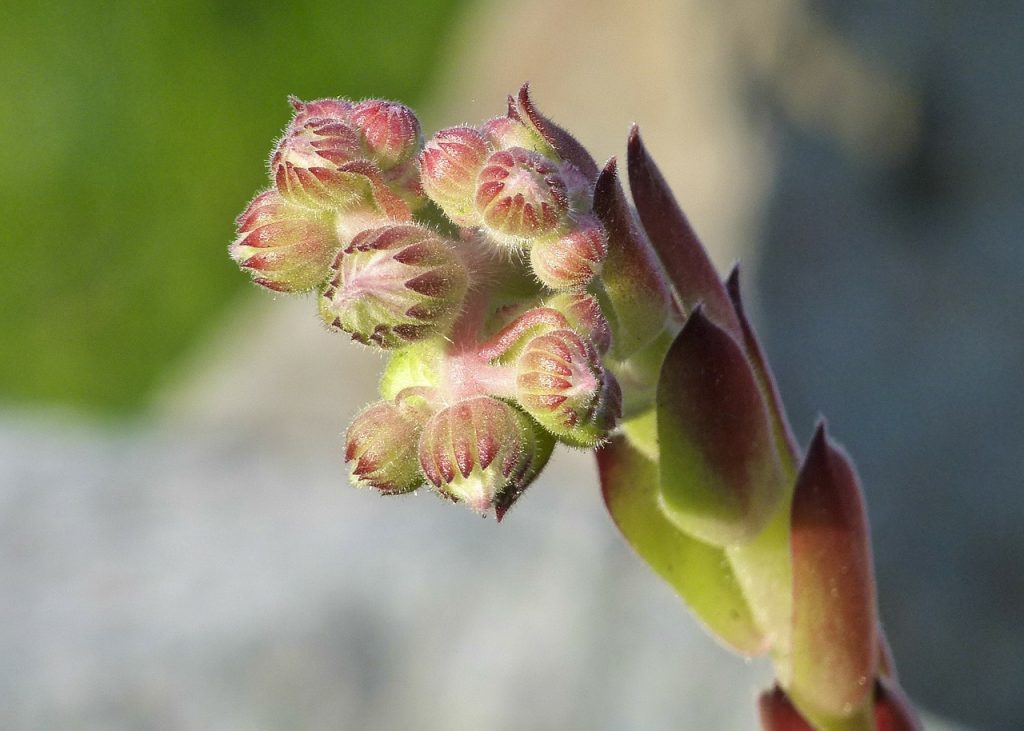
Step 3
Protect the flower from potential accidental cross-pollination. The best way to do this is by covering the stigma and stamen (or the whole flower) with a small bag. You do this for your outdoor succulents. For indoor succulents, this is not an issue. Because in most cases, insects do not reside inside the house.
How do you know if the breeding process is successful? The best indicator of success is a little swelling in the base of the flower. This happens several weeks later. The length of time you need to wait depends on the succulent you are growing.
Step 4
Make some marking on the flowers that have just undergone the cross-breeding. You can tie a soft string on it or write markings on the bag of the flower. This will help you easily identify the pollinated flowers. Remember, it seems easy to remember which flower you pollinated once you do it. But when in a few days other succulents start to bloom or plants grow and flowers open, you may not remember it anymore…
Step 5
This one seems secondary, but it is actually very important. Isolate the newly pollinated plants from possible disturbance of any kind. Wait until you see the result. Breeding succulents is a tricky process. This means that it does not guarantee a hundred percent success. It depends on how you do it.
In addition, patience is key to a successful cross-breeding. If you cannot wait or in many cases, redo the whole process (if it failed the first time over), then breeding succulents is not your thing. You might want to propagate succulents using leaves or stems instead–which is much easier.
Related: How to grow succulents from cuttings.
Problems you may encounter while breeding succulents
The hybridization process of succulents is challenging. You may come across a variety of problems. And most of those challenges are unpredictable. You will never know if the result meets your expectations until it reveals. Sometimes it takes a hundred if not a thousand attempts before you see the desired outcome. But that’s perhaps how it goes with most worthy things in our life…
Another possible issue is that the newly-produced breed may not be as cold or drought-resistant as the original plant. This problem is commonly seen among hybridized succulents. The offspring sometimes are sterile too, so while you managed to achieve some success, you may not be able to replicate it further and perhaps sell your new succulent variety.
Sterile succulents cannot be cross-breed with another succulent through pollination. The only option is to propagate them using stems and leaves–which may also not always work. Another problem in breeding succulents is that your chosen two plants may not bloom simultaneously. You cannot save the pollen of each plant… In this case, your best option is to manipulate the environment to make both plants produce flowers simultaneously, such as changing temperatures or moisture and simply incentivize the succulents to bloom at the same time.
Another issue consists in insects and other animals. After the pollination, you need to protect the flowers from accidental pollination by insects or animals. Lastly, hybrid succulents are not as healthy as the unaltered ones. Aside from being sterile, they are also weak and prone to diseases. As a result, they are more vulnerable to environmental changes. However, this does not mean that you cannot have a hybrid succulent. In fact, there are suppliers that sell beautiful hybrid succulents online. The price is usually high because of the complicated process it takes to produce such a plant…
Do succulents self-pollinate?
Many people have asked me this question so I want to clarify it for good. Can you actually self-pollinate succulents? The answer is yes. Succulents do self-pollinate. But depending on your purpose, this process, in most cases, is harmful to the plant itself.
Self-pollination triggers the recessive traits to resurface. Although potentially harmful, it could also produce color and shape variations. But some succulents won’t self-pollinate. They just don’t accept their own pollen. In short, you need to pair them with other succulents. Cross-breeding with the same genus is the best thing to do.
Succulent breeding in most cases is always experimental in nature. Sometimes things don’t turn as expected. Hence patience is key. Do not expect results, do not focus on them. Focus on effort instead, giving it your best shot. As you become more experienced in the process, you’ll become more and more knowledgeable. You just need to believe in yourself. Good luck!
How to propagate succulents with honey?
Two weeks ago we propagated some of our succulents. But after several days, we noticed that some leaves were gradually turning into orange-brown color. We fixed the problem immediately using honey during the propagation process.
Honey acts as an agent to stimulate root growth which helps to successfully create new copies of a succulent. Let me tell you how to benefit from it. So, carefully take a part from a full-grown succulent. Dip the open end of the tissues into a cooled mixture of one tablespoon of pure or raw honey and two cups of boiled water. It is pivotal that you use real honey, and not that sugary substance they often sell in supermarkets branded as “honey”. Because only real honey has the properties that help with propagation.
Honey as an organic stimulant, next steps you need to take
Do not plant the cuttings in deep soil. On the contrary, just position them down on the surface of the soil and let them dry. After a couple of weeks, you will notice small succulents emerging from the lowest part of the leaves.
When they become large enough, gently pull out the dying part from which you propagated, and since they need to be in deep soil already, transfer them to a shallow and wide pot for further propagation. Since honey is not a synthetic but an organic rooting stimulant, it may take long before you see the result. It would be best to fill some rock on the bottom to drain the soil, add some soil that has more drained bits so roots can hold onto it, and then press down the soil to make it solidly fixed in the pot.
The natural properties of honey, especially antiseptic and anti-fungal, inhibit the growth of microorganisms that may infect tissue and cause disease in the process of propagating your plants. Hence, honey as a rooting hormone ensures that the leaves or cuttings stay healthy.
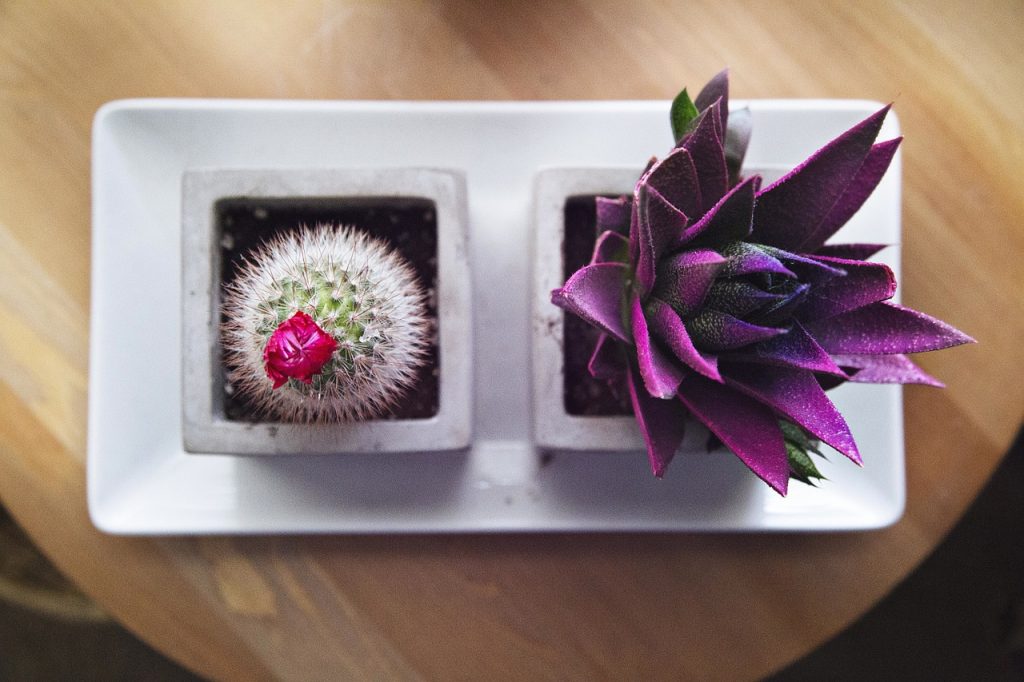
How to Propagate Succulents from Leaves and Cuttings
Before propagating succulents (with any method), you need to know first the genus where your succulent belongs, and its species. The part of the plant that you will take with which propagation will work depends on the genus. Some succulents can be propagated with leaf, some with cutting, and some with both.
Sedums and Echeveria, for example, can grow with both, whereas, Aeonium works only with cuttings. This means that various groups of succulents grow only when you propagate them using the correct part of a mother plant. Keep it on your mind before you start the work. Let’s have a look now at how you can propagate your succulents from cuttings, by far the most popular method.
Related: How to Grow Succulents? The Complete Guide
Propagation from cuttings
Use scissors or any sharp tool. You can cut off either the top piece of the succulent or the offshoot. After cutting or taking the leaves, wait until it dries out and until the wound forms the crustaceans covering of dried “blood.” This may take up to three days. It is normal for the leaf or cutting to wither and wrinkle if no scab forms.
There are several ways to prevent the leaf or cutting from dying. For the leaf, place it on top of the soil without its ends touching on it and water when the soil dries. On the other hand, cuttings can be planted already since they are nearly full-grown. Whenever its soil gets dry, water it. Consider also the temperature of the area, kind of the plant and climate among other factors that affect the time that will take, which usually is two to three weeks, for roots to form.
The success rate of propagating succulent, however, is a bit challenging. Some root but don’t grow new succulent at all, while some baby succulents grow but not as much as their copies do. Some take a month to fully grow, while some take a year. Nevertheless, you can experiment and play along with your plants…
Improve the chances of successful propagation with right choices
- Choose a healthy-looking succulent. The form, color, and quality are some of the things you need to check. If the leaves have green, lively and full rounded form, the succulent is healthy. On the other hand, if the leaves are brown and withering, do not pick that succulent for propagation using honey, since it isn’t in a good condition. Changes in color do not always mean unhealthiness though. Some succulents might just have been exposed to too much light or too much water but return to their original color when you address the cause. Some growers even decorate their succulents with paints. Remember though that this cover-up may prevent the succulent from absorbing enough sunlight.
- Plant in the right soil mix. There are different types of soils (or a mixture thereof) for a variety of succulents. In other words, some succulents grow only in the soil especially made for them and some do not. In any case, opt for fast draining soil.
- Expose to sunlight. Make sure that succulents, be it indoors or outdoors, get enough sunlight exposure. Succulents grow in deserts under the sun after all… If they undergo a change in color, this may mean they lack sunlight. No worries in winter if that is the case because you can actually use tools that provide light, take grow light for example (you can check my favorite grow light on Amazon).
- Water the plant just right. Too much water drowns succulents, complete lack of it withers it, but “just the right amount” allows it to grow healthier. As you can observe, healthy succulents have fat leaves. That serves as their water storage and that is how succulents survive in the desert, so water only when the soil gets a drain and the leaves get transparent. You can also check my guide on watering succulents indoors.
- Wait. Do not rush. It takes time to propagate the succulents. Nature is not a machine. Maybe some cuttings start growing roots in a day, but for some it may take a week or longer. Be patient. If you take the right steps, you will eventually get the desired results.
May also interest you: Succulents – 20 most common questions and answers.
